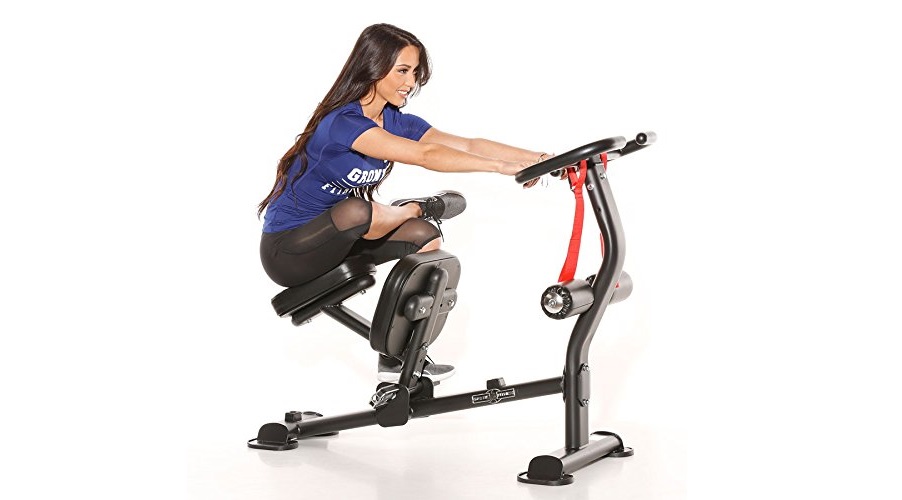Become More Functional By Stretching Properly
Static VS Dynamic Stretching
If you do NOT want to increase your flexibility, improve your performance, correct imbalances, recover faster from injuries and even improve the quality of your life, then this article is NOT for you and you should just click away.
If you are still reading, then you already understand how vital stretching can be, not only for athletes and gym goers, but for regular people as well. Having said that, the debate between static and dynamic stretching has being going on long enough and it’s time we debunked a few myths and laid out a few facts.
By the time this article is over, you will know everything about stretching, including the right time to stretch and what type of stretching routine you should be following, depending on your goals and your personal build.
Proper Stretching BEFORE A Training Session Or Game
Whatever your sport or gym routine may be, you should always allocate 10 – 15 minutes to thoroughly and properly warming up. In fact, you need to utilize this time to prepare your body and mind for what’s to come. Jumping into a high intensity activity without warming up is simply an invitation for a serious injury.
For the longest time we were told that static stretching was the proper way to loosen up our muscles prior to training or competition but the truth is that static stretching is not just unfitting but it can also be detrimental to your performance. Strength loss of 9-15% has been linked with static stretching prior to training and it actually makes sense. It’s unwise to stretch a cold muscle to its maximum length because you’re not only causing potential micro tears but you are also reducing the nervous system’s ability to recruit and activate that muscle, hence the strength drop.
In reality, the exact opposite of static stretching stands true and it’s simply dynamic stretching. Dynamic stretches are designed to take a joint or a muscle through a challenging and repetitive motion, moving a body part further with each repetition. Instead of depriving the muscle of blood and oxygen for a long time, dynamic stretching keeps pumping the muscle with blood, warming it up and increasing the range of motion at the same time. All professional athletes stretch dynamically before the game or before their training sessions to warm up and reduce their chances of injury.
"It's all about getting the blood to your muscles before you start to stretch. Do an exercise to promote the blood flow and then do some dynamic stretches to encourage more blood flow. I only stretch statically when I am 100% warmed up." –Glenn Gronkowski, Patriots’ Fullback
In addition, dynamic stretching gets you mentally prepared for the game ahead. A static stretching warm up is more relaxing than anything else. This can trick your body into a relaxation mode and can be a difficult transition from rest period into competitor mode.
Proper Stretching AFTER A Training Session Or Game
Upon finishing a workout session or a game, you should never just head off to the locker room. You need to cool your body and mind down and take advantage of this time to work on your flexibility and mobility utilizing static stretching. Your muscles are surging with blood and they are as warm as they will ever going to be which means this is a perfect time to try to lengthen them.
Static stretches are designed to hold a position for 30 – 60 seconds to increase flexibility in the tissue. The focus is on relaxing the body part being stretching and letting it go further on its own without forcing it. Since it’s clear now that static stretching is used for cooldown purposes, you can understand how doing it prior to the session will actually inhibit your muscles’ ability to fire!
After every single session, aim for 10 – 15 minutes of static stretching and use that time not only to improve your flexibility and recovery but also to breathe properly and relax your entire nervous system. Always breathe through the nose, especially while trying to hold a position for an extended duration of time and make sure you are using your diaphragm to do the majority of the breathing, not your chest.
Also, if you work out at home and you want an efficient and fun way to perform a stretch routine, you should try the Gronk Fitness Stretch Machine which enables you to stretch ALL your muscles with comfort and assistance.
Proper Stretching To Work On Muscular Imbalances & Injuries
Although stretching is generally thought of as something essential and highly advantageous, that’s not always the case. In fact, stretching the wrong body parts can augment certain imbalances instead of resolving them.
Having said that, there are some muscle groups that, due to our lifestyle, tend to always be tight and always need stretching. For example, you will never encounter an athlete with a loose/weak chest. The chest is always tight and it always needs the appropriate static stretching after it’s been warmed up.
The hips are more complicated and thus, stretching what “feels” tight is not always fitting. For example, most people have tight hamstrings but only a fraction of them should stretch them. The majority of them should be strengthening their hamstrings instead. Why?
A muscle could “feel” tight either because it’s actually tight or because it’s weak and trying to do more work than normal. Most people with tight hamstrings tend to have really short and tight hip flexors and lower back muscles which pulls their entire pelvis out of position and makes the hamstrings work much harder to deal with the increased load. So the hamstrings are actually being constantly outstretched and that’s why they “feel” tight. Stretching them on top of that, will make them even weaker and the imbalance will worsen.
Therefore, always understand your body before attempting to correct an imbalance and loosen up your muscles. Sometimes, it can be destructive without even realizing it. Always consult your coach, trainer or sports therapist and learn which static stretches you should be doing and which ones you should be avoiding.
Final Thoughts
Stretching is most effective when done properly. Avoid static stretching if your muscles are cold. Instead, dynamic stretching should be done before exercise, with static stretching ending the workout to help you cool down.
In fact, a warm up and cooldown routine not incorporating dynamic and static stretching accordingly, is not appropriate for increasing your overall performance nor getting your mind right!
NOTE: This article was originally posted on GronkFitnessProducts.com. Be sure to stop by GronkFitness for more informative articles, as well as a hub for all your weight training needs!








